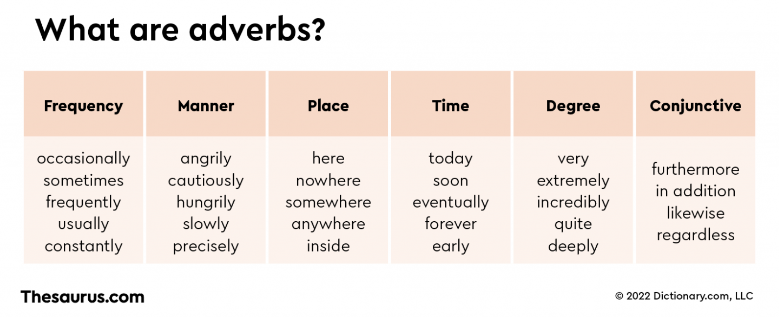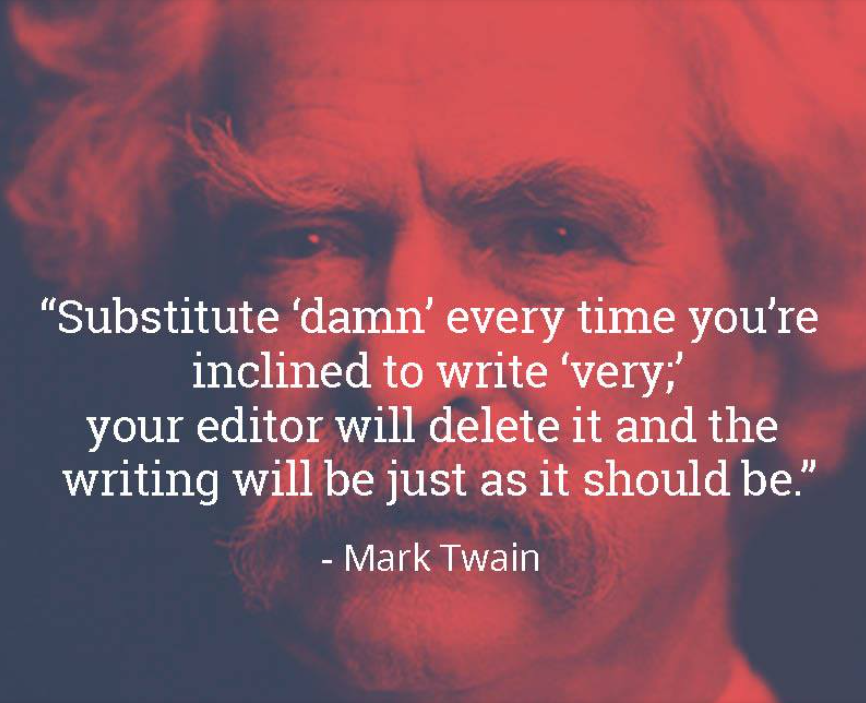Ever caught yourself wondering, what is an adverb? You’re not alone. The world of grammar can be as complex as a labyrinth at times.
We’ve all been there – pen in hand or fingers on the keyboard, trying to construct that perfect sentence only to get stuck on how best to describe an action.
Like secret agents in language, they slip into sentences undetected but their impact? Unmistakable. They transform verbs from ordinary doers into vivid performers; they give your adjectives depth and perspective; heck, some even have the audacity to modify fellow adverbs!
In this post, we’ll delve deep into what is an adverb and learn about their types, uncovering relationships with verbs and adjectives alike, and even exploring special categories like sentence adverbs.
Are you ready?
Table Of Contents:
- What is an Adverb?
- Interaction Between Adverbs and Adjectives
- Sentence Adverbs – A Special Category
- Degrees of Comparison in Adverbs
- Proper Placement of Adverbs
- When To Avoid Using Adverbs
- FAQs in Relation to What is an Adverb
- Conclusion
What is an Adverb?
One of the 8 parts of speech, an adverb is a word that modifies or describes a verb, adjective, or another adverb, typically indicating how, when, where, or to what extent an action or state occurs.
Adverbs are like secret spices in your language kitchen.
Ever wondered why we say “speak softly” instead of just “speak”? That’s where adverbs make their presence known.
An adverb, by definition, is a word that modifies or describes verbs, adjectives, adverbs, phrases, or sentences.
Adverbs can express manner, place, time, frequency, degree, certainty, and other concepts.
Many adverbs end in “-ly,” but there are also many common adverbs that do not. Adverbs add flavor and precision to our writing.
The primary role of an adverb is to modify a verb.
Let’s take the sentence “He runs.” Pretty basic right?
Now let’s add adverbs- “He runs quickly.”
Here ‘quickly’ tells us how he runs.

Source: Thesaurus.com
Beyond verbs, adverbs can also modify adjectives.
Consider this example: “She has long hair” – pretty simple but not very descriptive.
How about: “She has incredibly long hair.”
Notice how adding ‘incredibly’ gave more intensity?
You might be surprised to know that sometimes two different types of the same class words interact together too.
For instance, consider the phrase “She speaks really softly”.
Here, we used one modifier (‘really’) to describe another (‘softly’). It may be unusual but totally legit.
Moving beyond individual words, special kinds of adverbs called sentence adverbs can modify an entire sentence.
Let’s say, “She sings” is your basic statement.
Now add a little zing: “Surprisingly, she sings.”
Here ‘surprisingly’ adds a whole new layer to the context.
In summary, don’t dismiss adverbs as mere fillers or extras. They bring critical depth and subtlety to language.
How Adverbs Modify Other Adverbs
The art of adverbs modifying other adverbs is a fascinating aspect of the English language. But let’s get into more detail about these ‘modifying modifiers’.
For instance, consider the sentence “He ran very quickly”.
Here, ‘quickly’ tells us how he ran; it’s modifying the verb ‘ran’.
But then we have ‘very’, which is modifying ‘quickly’, telling us to what extent he was quick.
Sometimes these modifiers can even alter each other’s meanings slightly based on their arrangement in sentences.
The Impact of Linking Verbs on Adjectives and Adverbs
You might ask yourself “How do linking verbs come into play?”
Well, unlike regular verbs which describe actions or states of being (like ‘run’), linking verbs act as connectors between subjects and descriptions (such as ‘is’, and ‘seems’).
A key point here is that, unlike other cases where adverbs modify verbs directly, adjectives get priority over adverbs when dealing with linking verbs.
Linking verbs typically precede adjectives, not adverbs.
This unusual rule might seem tricky at first glance; however, don’t fret because there are tons of resources available online to help you master these linguistic nuances. One such reliable source is the Grammarly blog which provides a deeper understanding of how adjectives and verbs interact.

Source: Your Dictionary
Interaction Between Adverbs and Adjectives
The relationship between adverbs and adjectives is akin to a dance. An adverb, our nimble dancer, gracefully modifies or qualifies the meaning of an adjective, its partner.
You may ask: “How do adverbs modify adjectives?”.
It’s quite simple; by adding intensity or qualification. An example can help us understand better.
Consider the phrase “extremely beautiful”.
Here “beautiful” is an adjective describing a subject while “extremely” is an adverb modifying that adjective, it intensifies how beautiful something is.
“Very”, “quite”, and “rather” are some common examples of intensifiers – adverbs that alter the degree of the adjective.
If you’re wondering about flexibility, rest assured adverbs can adapt easily depending on what they need to describe or modify. To put it simply, using the right mix makes all the difference in your sentence — too much or too little could throw it off. The same applies when deciding how to use an adverb with its adjective counterpart.
Finding a balance can be tricky but practice makes perfect. Just remember that while adverbs are essential in adding depth to our sentences, they must not overshadow their adjective counterparts.
Sentence Adverbs – A Special Category
Sentence adverbs are a special category of adverbs that have the power to modify an entire sentence, distinguishing them from other types which usually affect verbs, adjectives, or other adverbs.
Unlike common adverbs that tweak verbs, adjective counterparts, or other adverb types, sentence adverbs offer an overview of the speaker’s attitude or opinion about what’s being said.
A phrase like ‘Surprisingly, she enjoyed camping.’ is vastly different from ‘Sadly, she enjoyed camping.’
In both cases, the action remains constant but it’s our perception that changes due to these sneaky sentence modifiers.
The beauty lies not just in their function but also in placement; with great flexibility comes a whole new range of expressive possibilities. This means they can be positioned at the start (like above), middle, or end of a sentence, depending on the desired emphasis and style.
We need to tread lightly when using sentence-level modifiers though because misusing them might result in ambiguity – not something we want while crafting clear communication.
For example ‘He only drinks coffee’ vs ‘Only he drinks coffee.’
The former implies exclusive beverage choice while the latter highlights uniqueness among peers.
Always remember Mark Twain’s advice:

The same holds true for sentence adverbs – use them sparingly to ensure their impact isn’t diluted.
Degrees of Comparison in Adverbs
When we talk about adverbs, the degrees of comparison come into play. They help us indicate relative intensity or extent.
Generally speaking, there are three degrees: positive, comparative, and superlative.
The positive degree describes a single action or state without comparing it to anything else – like when you say “He runs quickly.”
The comparative degree is used to compare two actions or states – think “She sings more beautifully than her sister.” Here ‘more beautifully’ shows that one person’s singing ability exceeds another’s.
Last but not least comes the superlative degree. This is where things get intense as it compares an action among three or more entities. “Of all his friends, he plays most skillfully.” You can see how ‘most skillfully’ implies this person surpasses everyone else in playing skills.
A useful tip when dealing with adverbial comparisons: sometimes it’s better to use stronger, precise adjectives instead of stacking up comparatives and superlatives willy-nilly.
After all, “Hemingway writes powerfully” sounds way better than saying, “Hemingway writes very well.”.
Adjectives typically add “-ly” and use “more” or “most” for comparative and superlative forms. However, some adverbs are irregular and don’t follow this pattern, such as “well,” “better,” and “best” in comparisons.
Proper Placement of Adverbs
Where you place an adverb can alter its meaning and impact.
Consider this: “He runs quickly” versus “Quickly, he runs.”
The first one describes how he runs while the second adds suspense and urgency to his action.
A common mistake made while placing an adverb is scattering it randomly. If placed incorrectly, it changes the intended meaning.
For example,’ She only loves him’, implies that she doesn’t do anything else for him except love him whereas if we say ‘She loves only him’, it means she does not love anyone else but him.
Adverbs should be placed as close as possible to the words they are intended to modify.
When To Avoid Using Adverbs
Adverbs can be used to add detail, emphasis, or qualification to a sentence. However, there are times when adverbs can be overused or misused, leading to weak or even confusing writing.
Here are some tips on when to avoid using adverbs:
- When the adverb is unnecessary. For example, the sentence “I quickly ran to the store” is more concise and effective without the adverb “quickly.” The verb “ran” already implies speed, so the adverb is redundant.
- When the adverb weakens the verb. For example, the sentence “I angrily shouted at my dog” is less forceful than the sentence “I shouted at my dog.” The adverb “angrily” tells us how the speaker was shouting, but it doesn’t add any additional information or meaning to the sentence.
- When the adverb is ambiguous. For example, the sentence “I ate a very good pizza” doesn’t really tell us anything about the pizza. The adverb “very” is vague and could mean different things to different people. Instead, the speaker could use more specific language to describe the pizza, such as “delicious,” “savory,” or “crunchy.”
- When the adverb is overused. Adverbs can be a useful tool, but they should be used sparingly. Too many adverbs can make your writing sound cluttered and amateurish. Instead, try to use strong verbs and specific language to convey your meaning.
FAQs – What is an Adverb
What is an adverb example?
An adverb modifies a verb, adjective, or another adverb. For instance, in the sentence “She sings beautifully”, ‘beautifully’ is an adverb.
What are 10 examples of an adverb?
‘Quickly’, ‘slowly’, ‘carefully’, ‘loudly’, ‘quietly’, ‘well’, ‘easily’, ‘never’, ‘often’, and ‘tomorrow’ are all examples of different types of adverbs.
What is an adverb for kids?
An easy way to explain it: an adverb describes how something happens. Like saying your little brother eats quickly – “quickly” tells us how he eats.
Conclusion
So, now you know what is an adverb. It’s that sneaky word modifier bringing life to your verbs, adding depth to your adjectives, and even modifying its fellow adverbs. A real game-changer in language!
You’ve learned about the different types of adverbs – manner, time, place, frequency, and degree. Each with its own unique role in sentence construction.
If you’re writing with an AI content marketing automation platform like BrandWell, you will notice that sentences are pretty straightforward so it’s your job to insert adverbs when appropriate to add a human touch to your piece.
When it comes to giving your writing flavor, adverbs are a great spice rack but use them wisely!